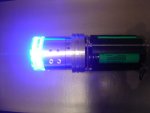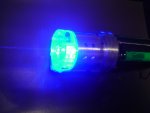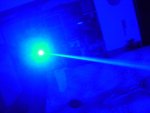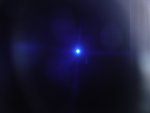As fas as fibre coupling goes, I have not personally done this for combining but in our applications it would likely reduce efficiency due to the added necessary optics for collimating. There is a gentleman local to me who is a leading expert on combining. His preferred method is to fibre couple and combine via volume bragg gradings. Of course this comes with a hefty price tag and can be complicated to design, not to mention the laser's wavelength must be very stable and without active temperature control that can be hard to achieve. The pay off though is very high efficiency and damage threshold.
In my opinion, for our purposes I would suggest taking at look at how most labs and professional projectors achieve beam combining. The laser is in a fixed position and well heat sunk and the optics are adjustable....not the other way around....
Because my company does have a patent pending on a combiner module it is in my best interest to not go any further into detail about configurations, optics etc.... I'm sure you can understand. Unfortunately production of the module has hit some bumps in the road and things in my life (ie. Kids and work) have forced me to put this on hold several times. The good news is I'm past the hold ups and I'm back to production....
Best of luck to you on your endeavours, your work looks very good, keep it up! :beer:







